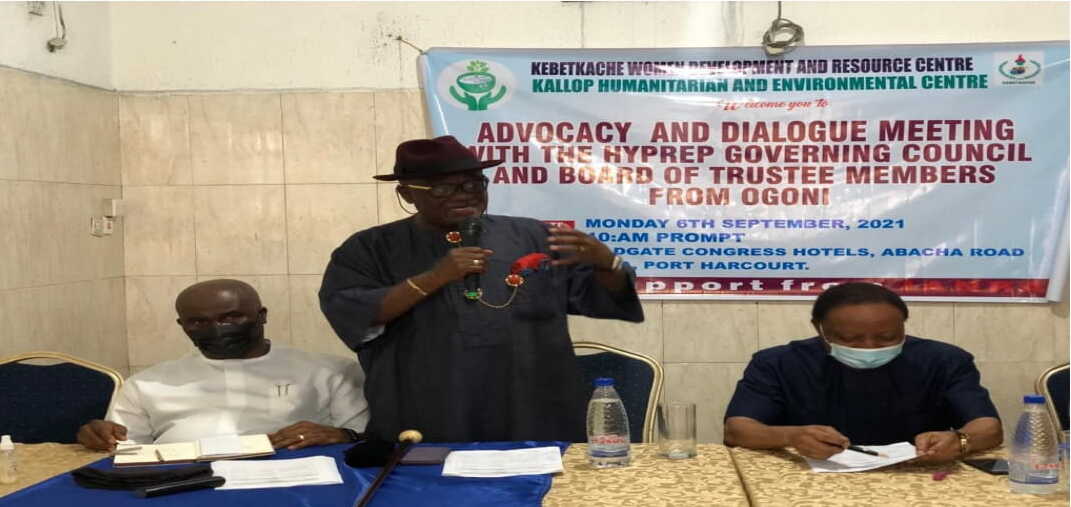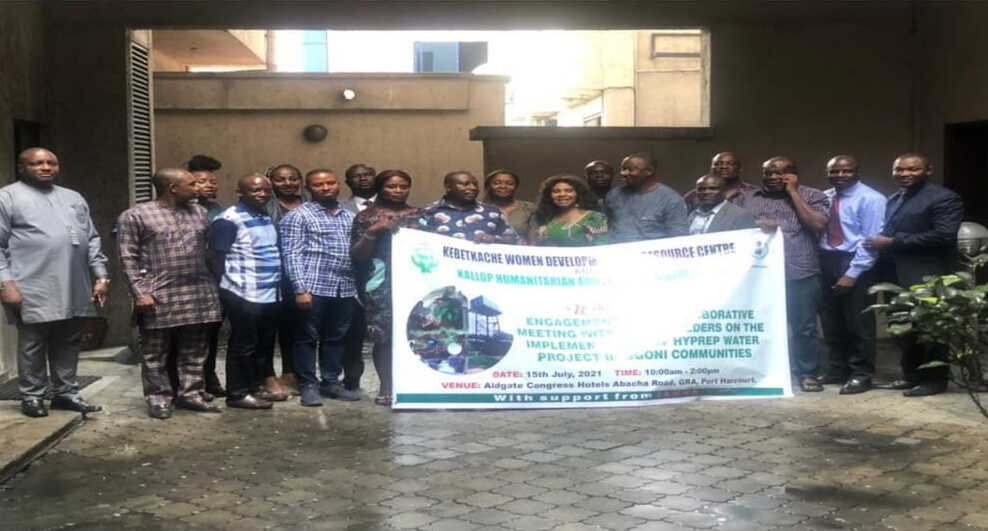COLLABORATIVE MEETING WITH KEY STAKEHOLDERS ON THE OGONI CLEANUP PROCESS
A consultative meeting held with key stakeholders on collaboration to promote
comprehensive and inclusive implementation of the HYPREP water project in Ogoni communities. Participants of the meeting include, a representative of the Hydrocarbon Pollution Remediation Project (HYPREP), Mr. Richard Mkpee (from the Monitoring and Evaluation Unit), Dr. Tambeke Gbarakoro, Dr. Gentle Komii and Dr. Franklin Tanee (Associate Professor), who are representatives of the Ogoni Environmental Professionals (OEP). Others were members of the Civil Society Organizations and the Media.
The purpose of the meeting was to build synergy among the various stakeholders on how best to collaborate and work together and to brainstorming on how effective they can come together to work with HYPREP to ensure the smooth and successful implementation of the water project by the Hydrocarbon Pollution Remediation Project (HYPREP).
During the meeting, the stakeholders agreed to work together in monitoring the
implementation of the water project by HYPREP in the Ogoni communities under the first phase of the water scheme. Although, they identified some issues affecting the project implementation, particularly that which borders on the relationship between HYPREP, communities and the CSOs. According to the participants, the fact that communities are not involved in the decision making on the water project makes them have little or no role to play at the various stages in the implementation process. This situation is capable of affecting negatively the sustainability plan of the project as communities do not have the sense of
ownership of the project.







